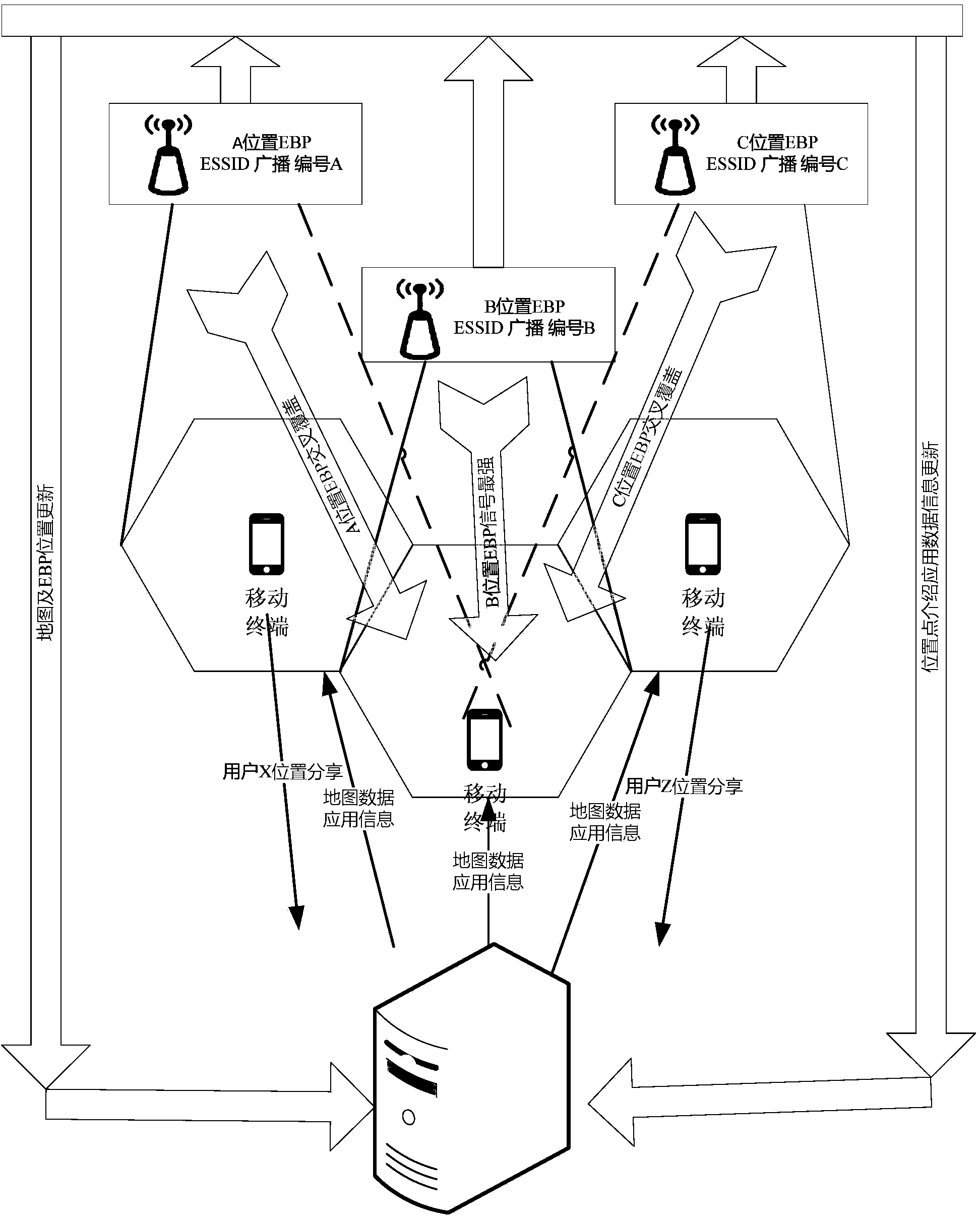Indoor relative position determining system, control method and control device
A technology of relative position and control method, applied in the field of indoor location service system, can solve problems such as difficult to adapt to complex environment, high system construction cost, low universality, etc., and achieve low construction and maintenance cost, small impact, and few distribution blind spots Effect
- Summary
- Abstract
- Description
- Claims
- Application Information
AI Technical Summary
Problems solved by technology
Method used
Image
Examples
Embodiment Construction
[0047] The specific implementation of the indoor relative position determination system and method based on 802.11 series protocols and EBP broadcasting described in the present invention will be described in detail below with reference to the accompanying drawings.
[0048] figure 1 It is a system structure diagram of the present invention, including several EBP devices, several mobile terminals supporting 802.11 series protocols and a background data processing center. Multiple EBP devices form a micro-cell with overlapping edges, and the cell radius is controlled at the sub-meter, meter or ten-meter level by adjusting the transmission power of the EBP device. The EBP device has a uniquely coded ESSID number, which ensures reception by mobile terminals of users within the coverage area through the cyclic broadcast of the number. Such as figure 1 As shown by user Y in the figure, the user’s mobile terminal needs to have and enable the WLAN function, refresh the SSID informa...
PUM
 Login to View More
Login to View More Abstract
Description
Claims
Application Information
 Login to View More
Login to View More - R&D
- Intellectual Property
- Life Sciences
- Materials
- Tech Scout
- Unparalleled Data Quality
- Higher Quality Content
- 60% Fewer Hallucinations
Browse by: Latest US Patents, China's latest patents, Technical Efficacy Thesaurus, Application Domain, Technology Topic, Popular Technical Reports.
© 2025 PatSnap. All rights reserved.Legal|Privacy policy|Modern Slavery Act Transparency Statement|Sitemap|About US| Contact US: help@patsnap.com



